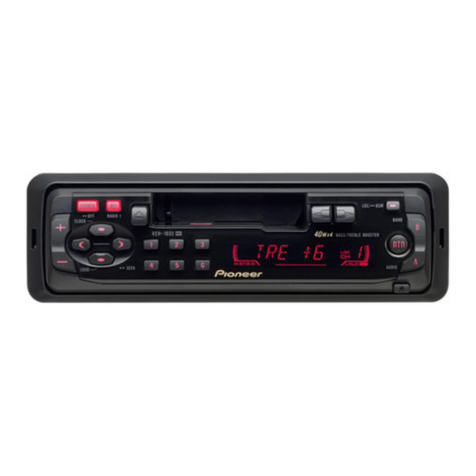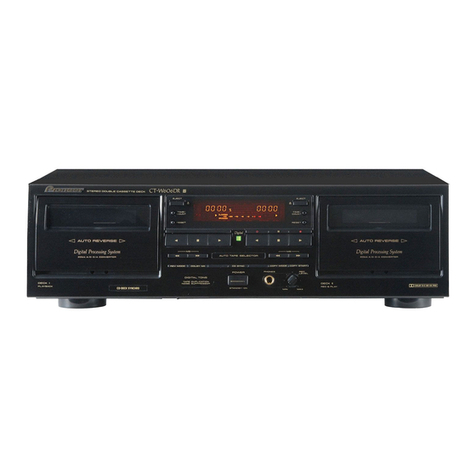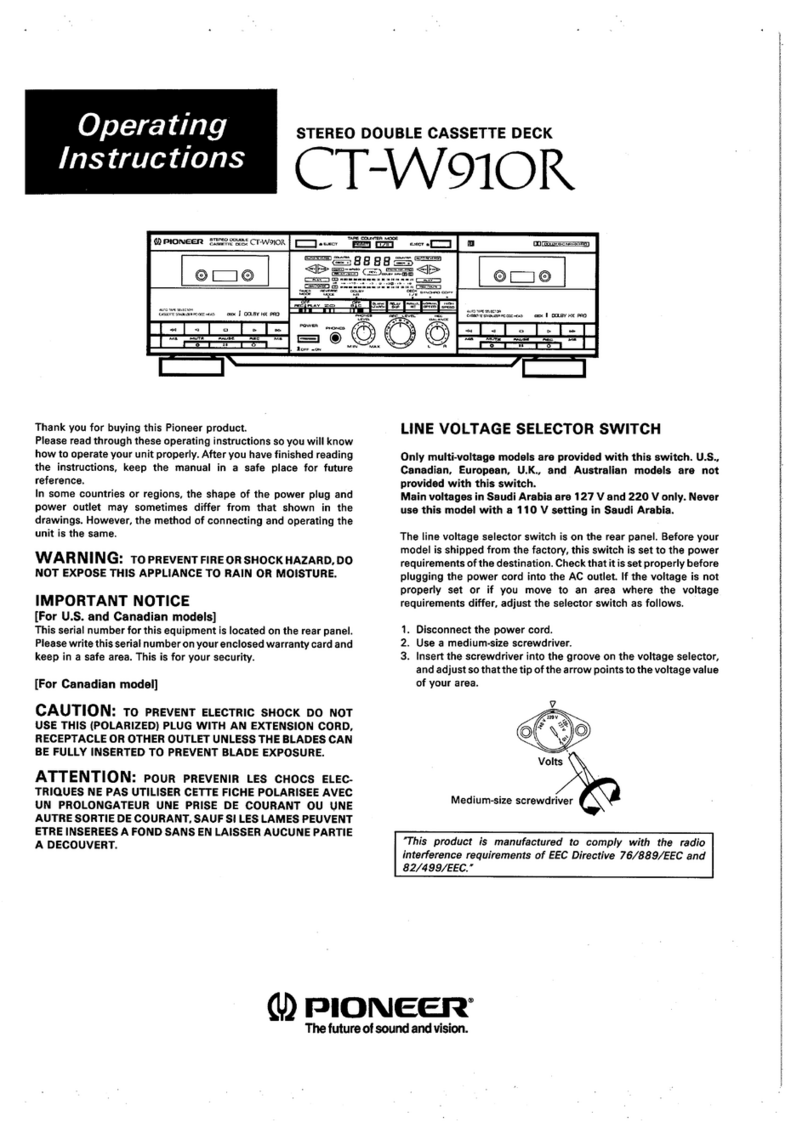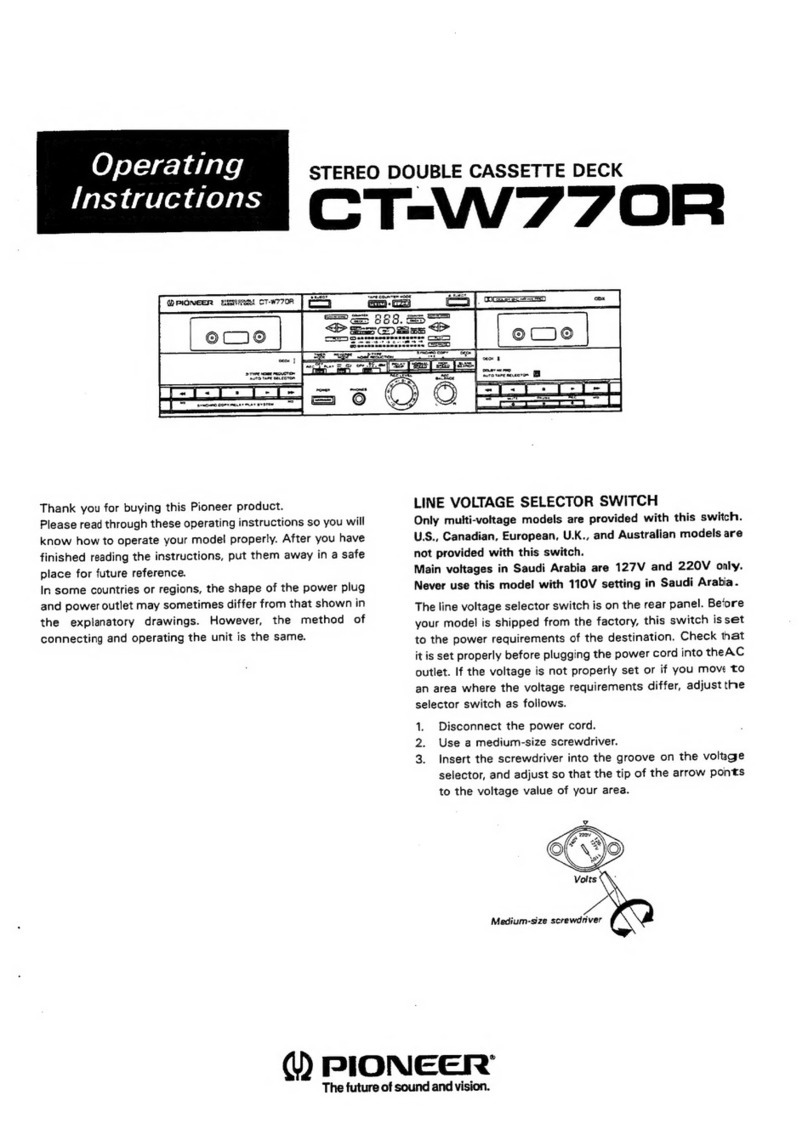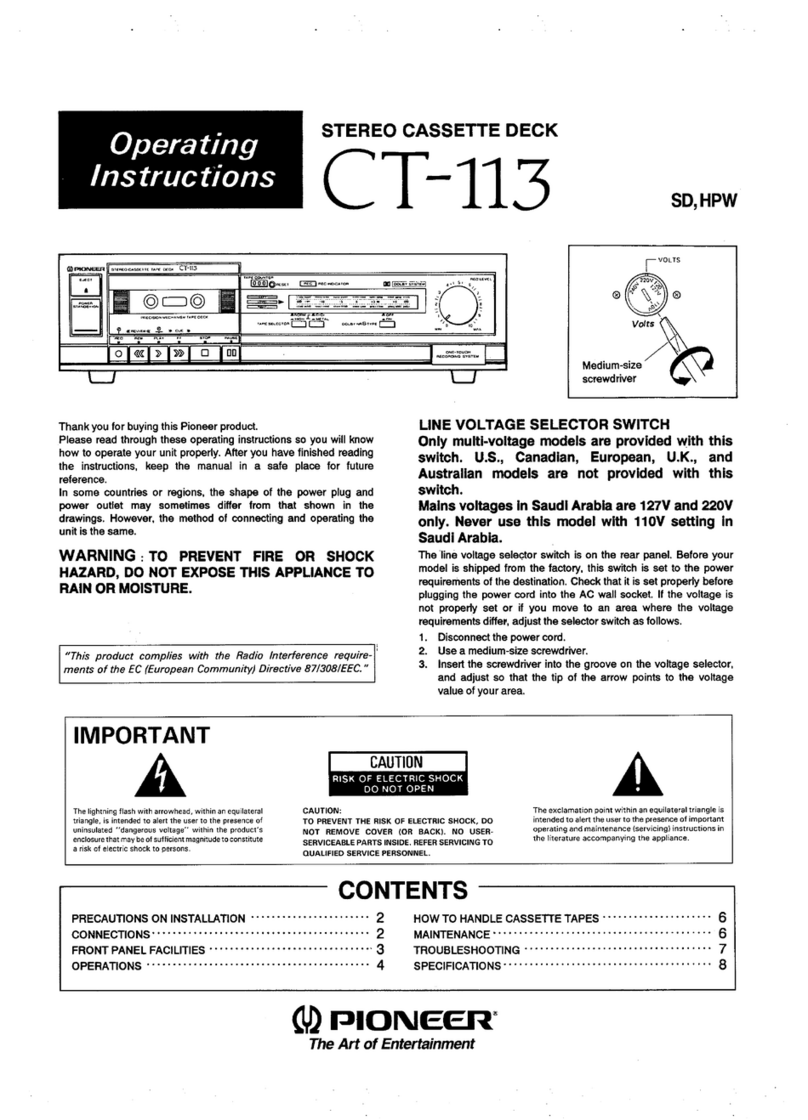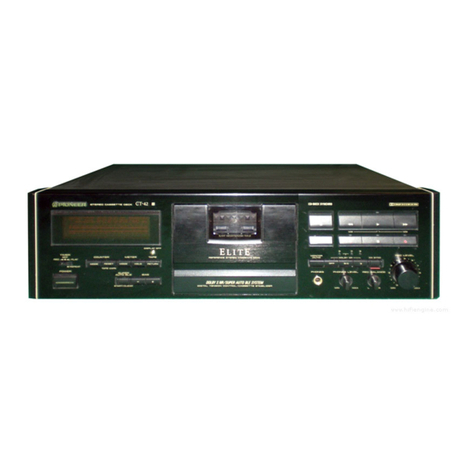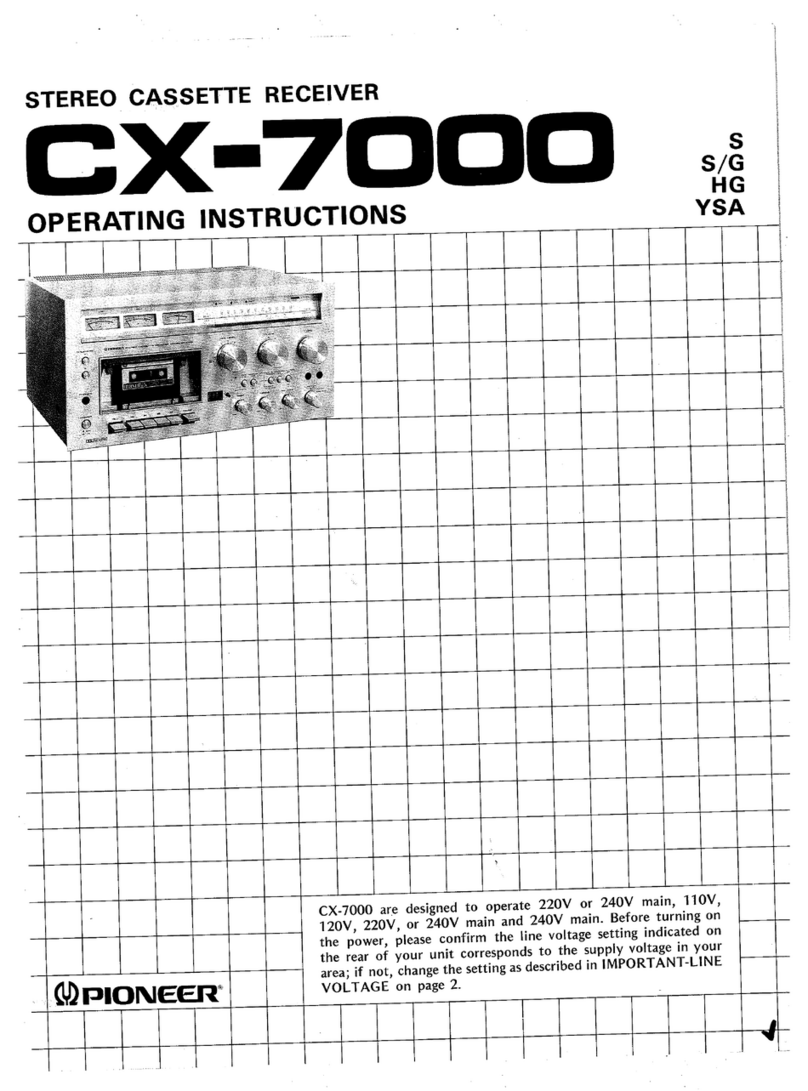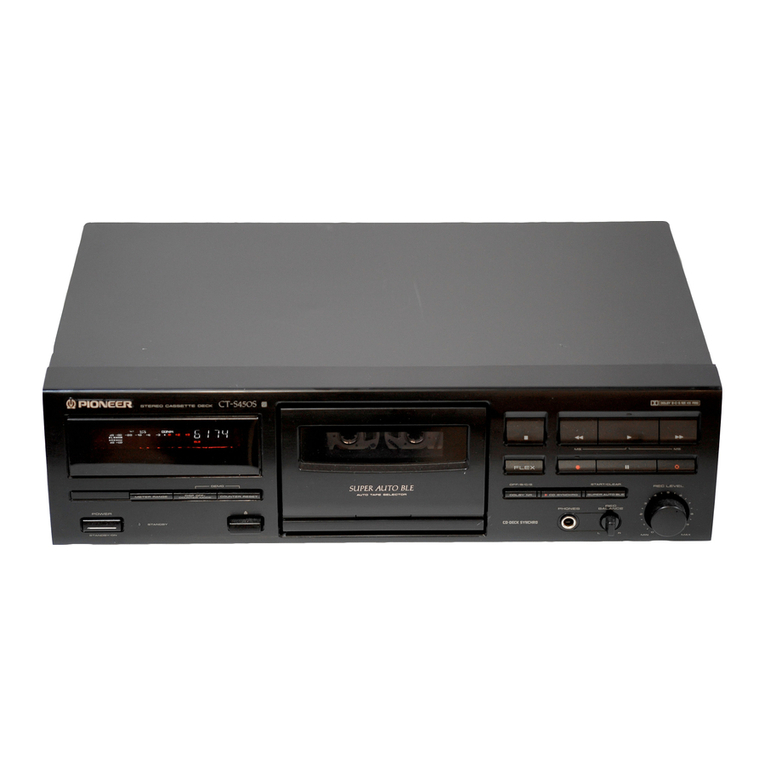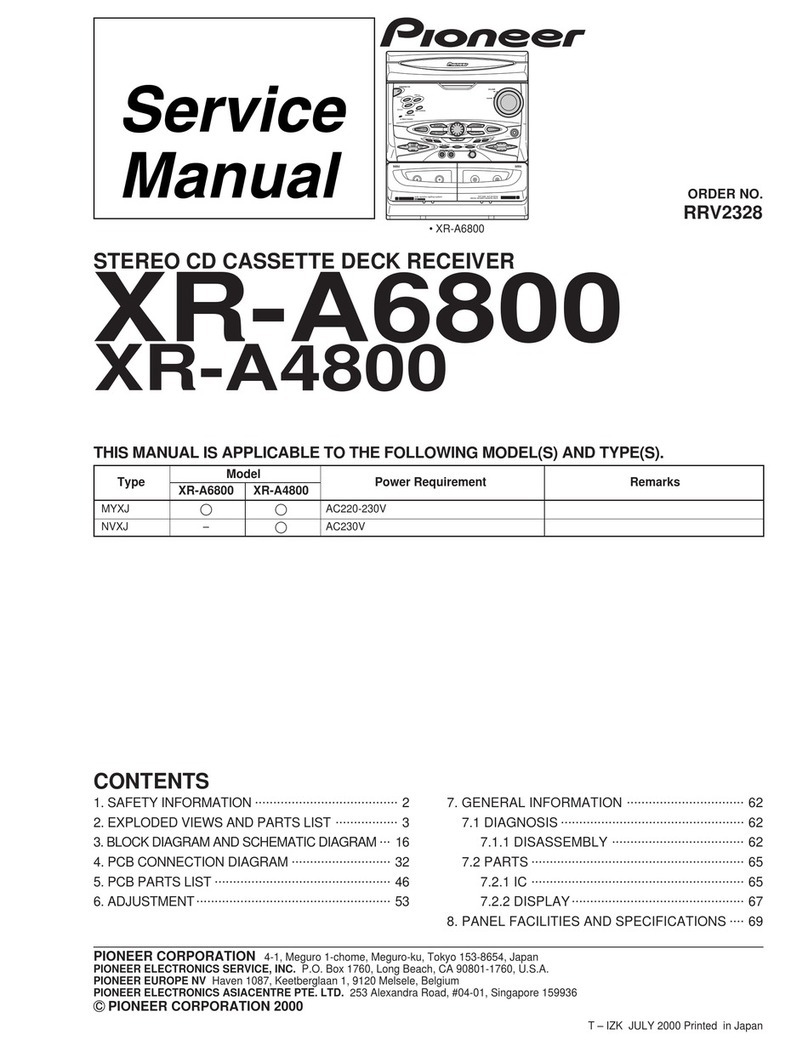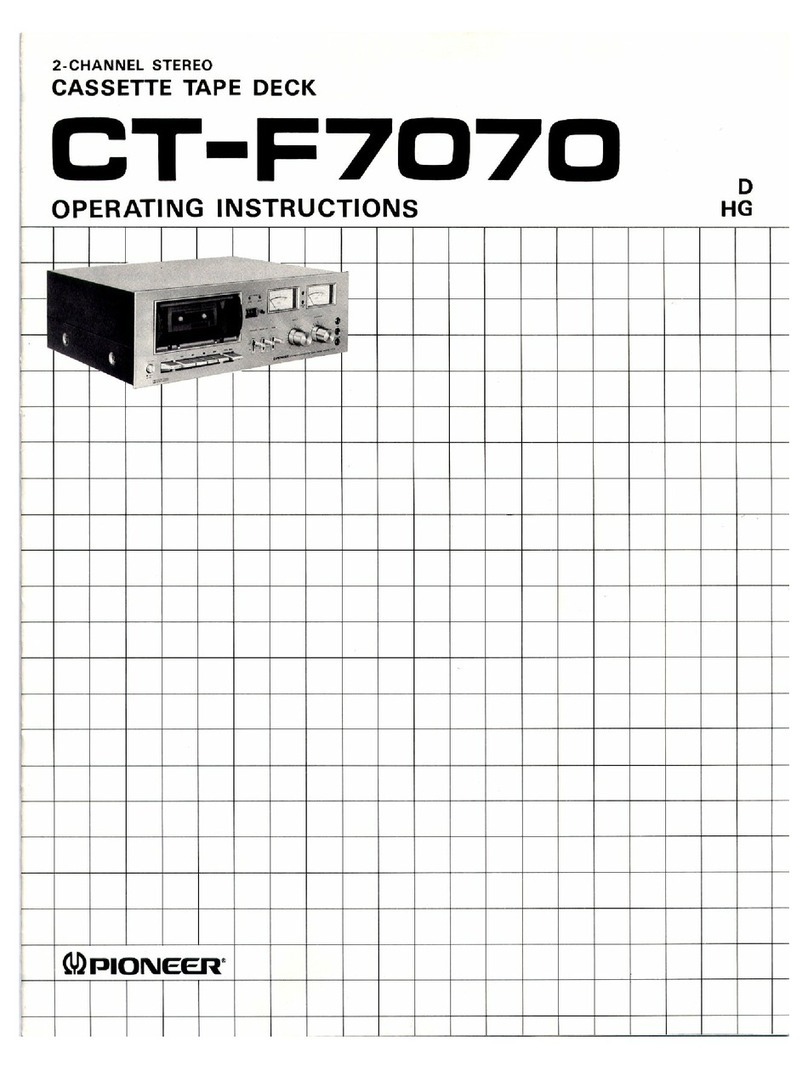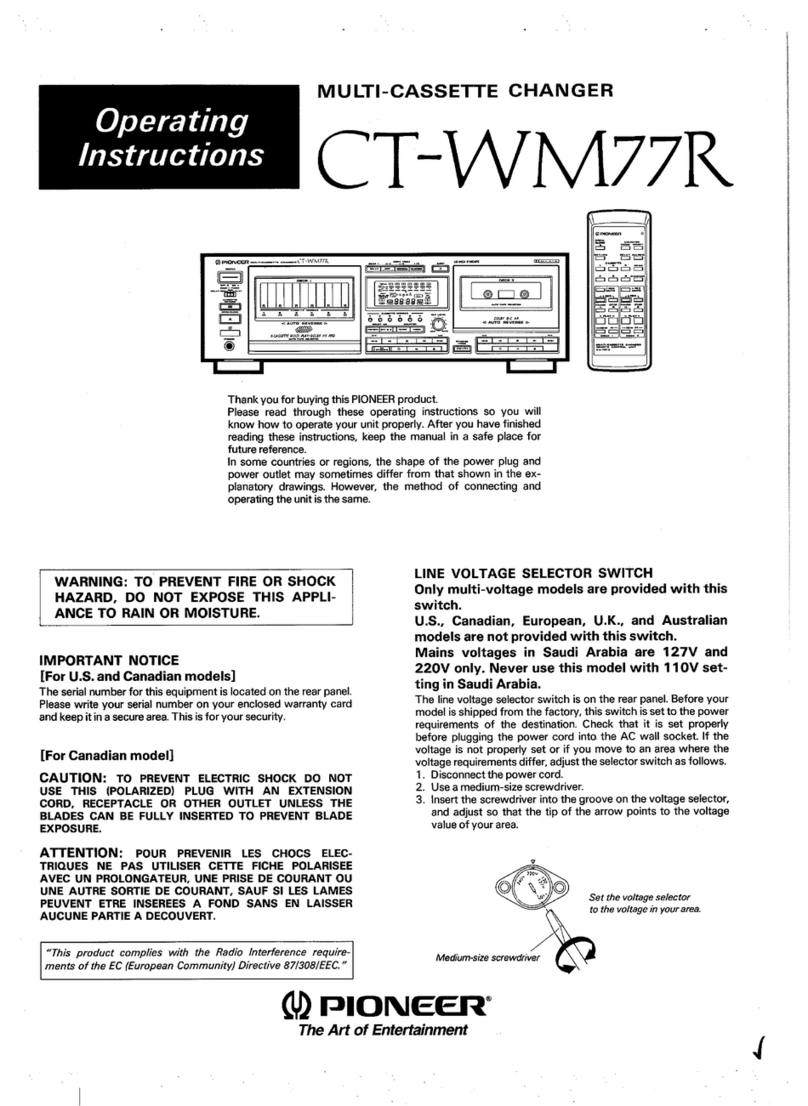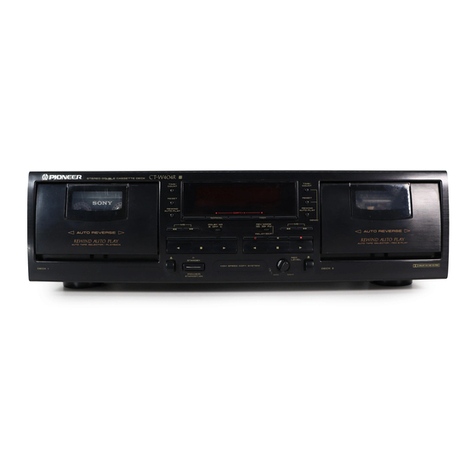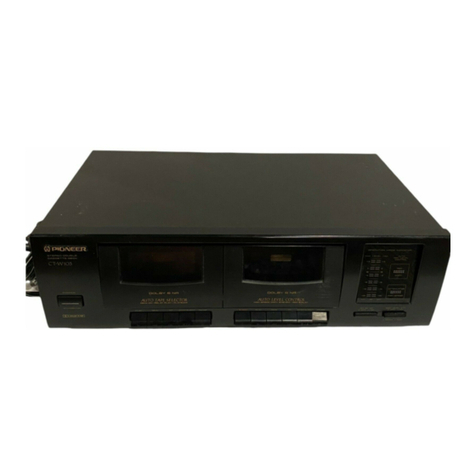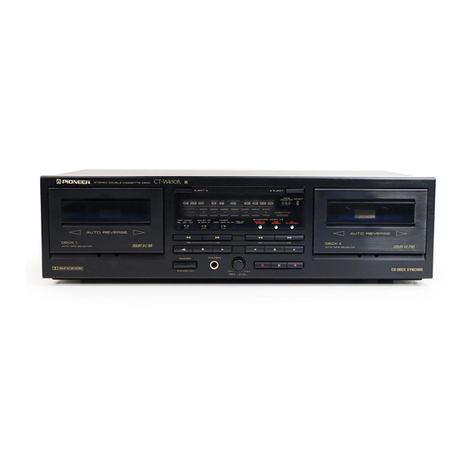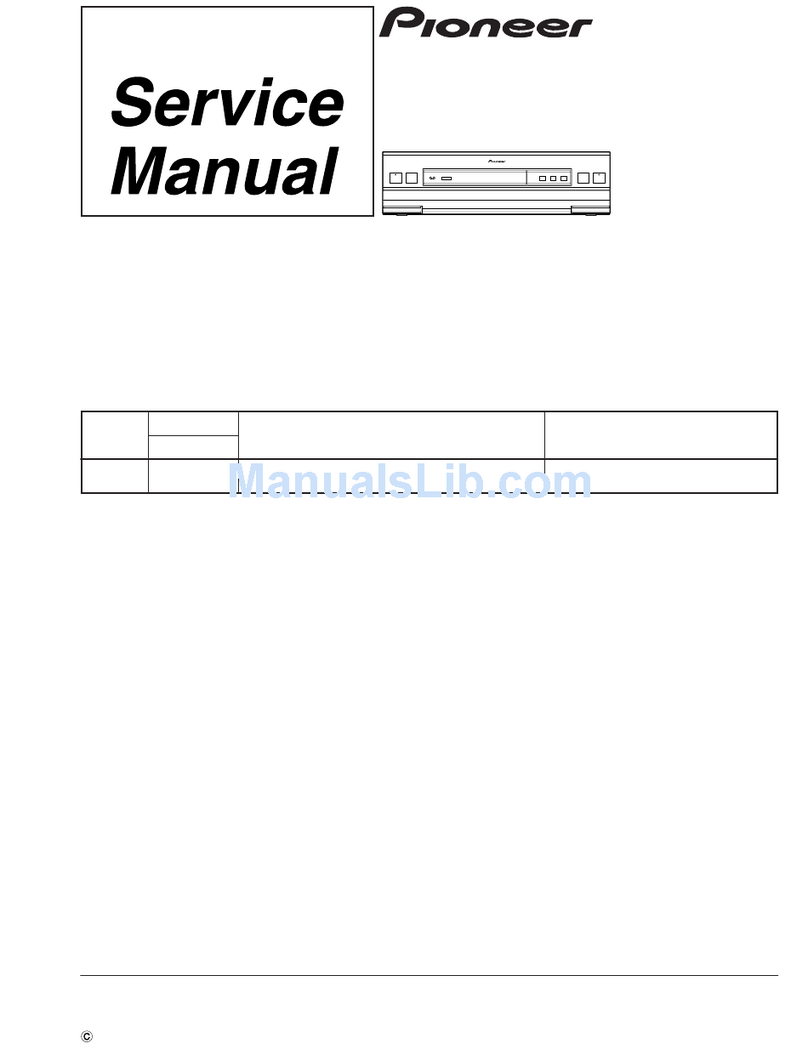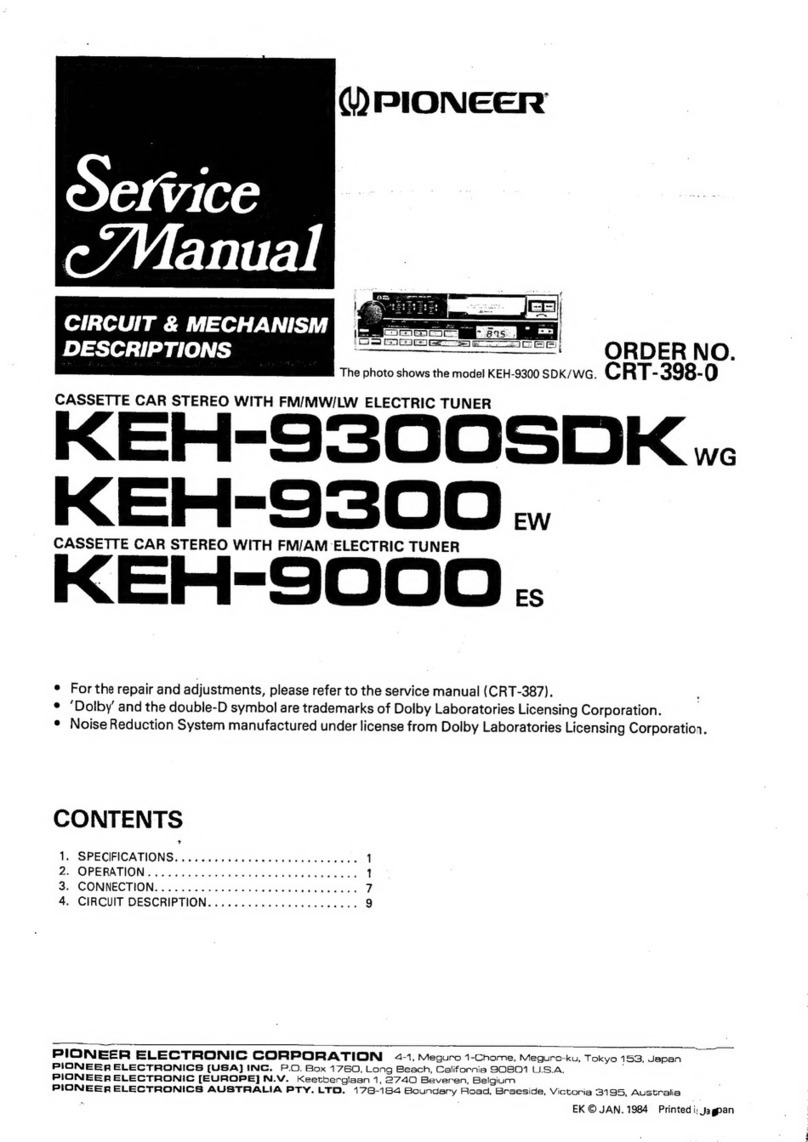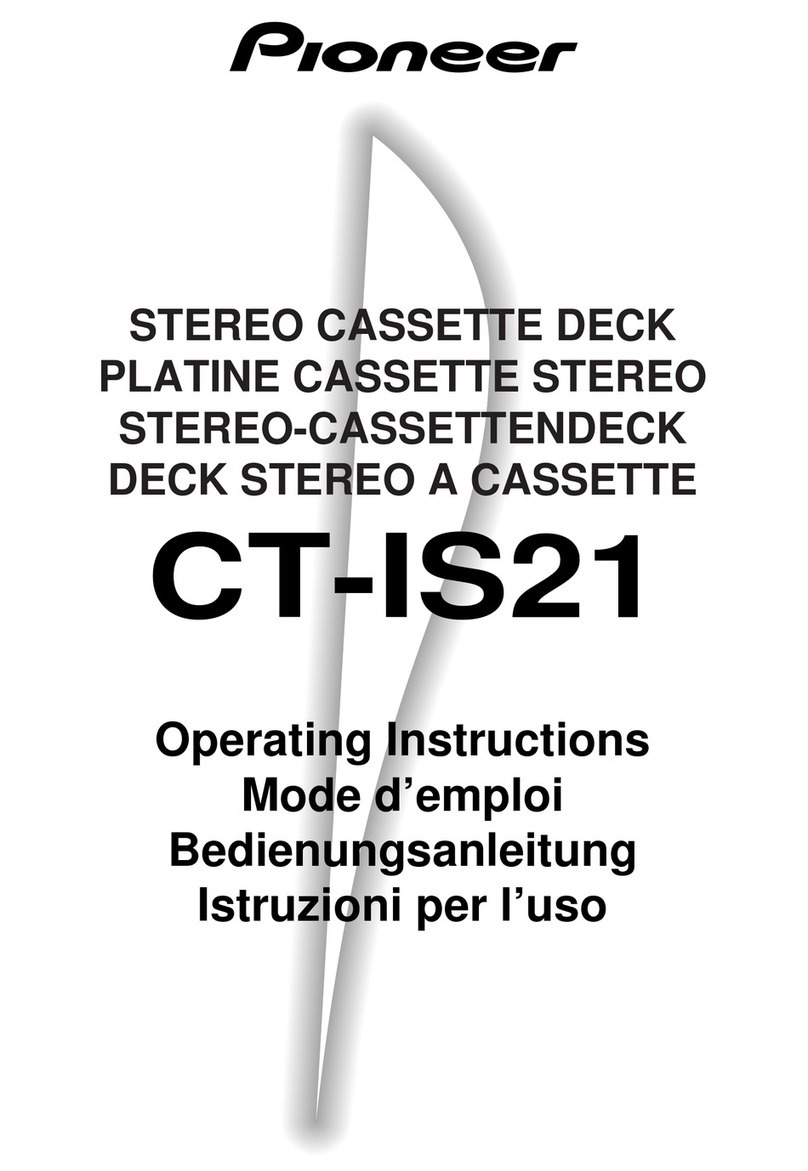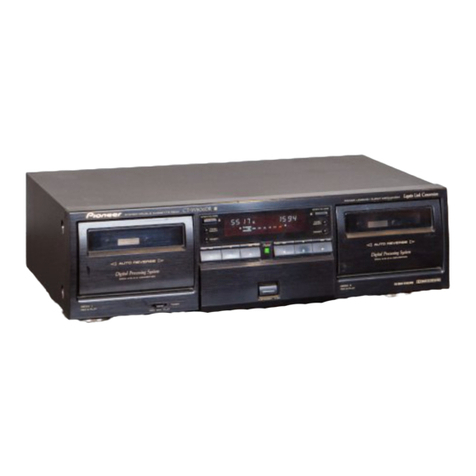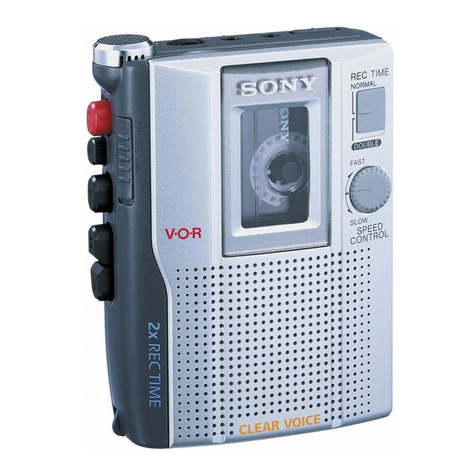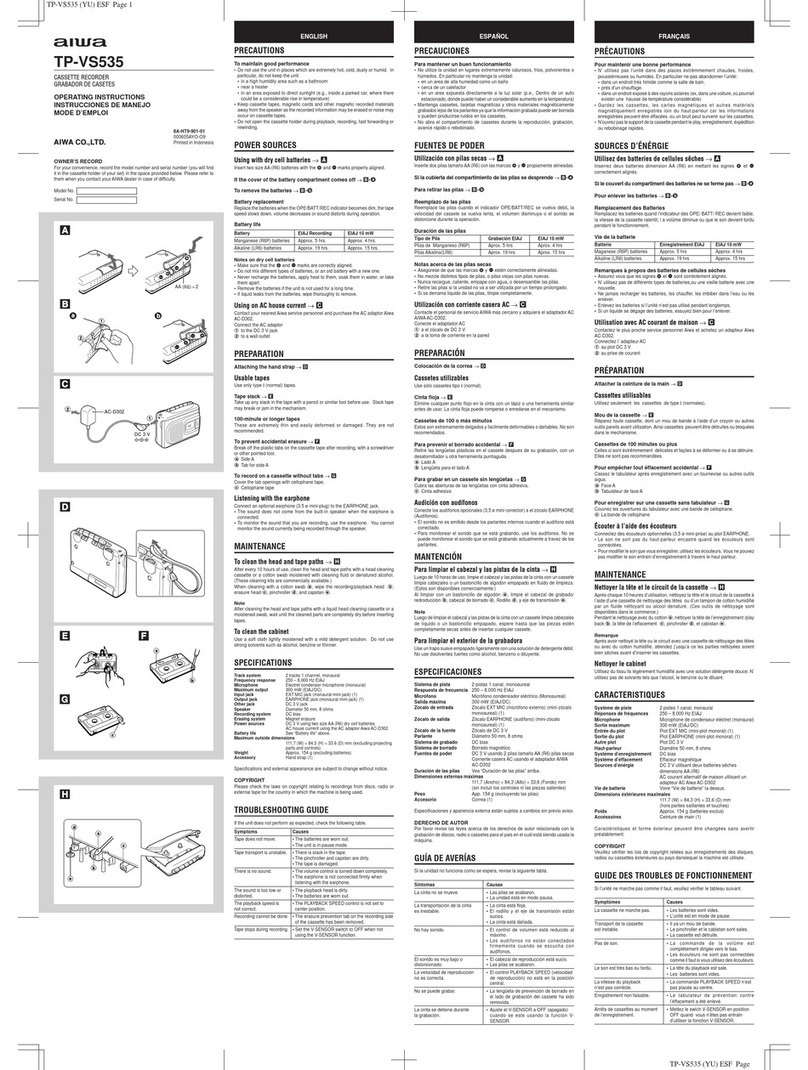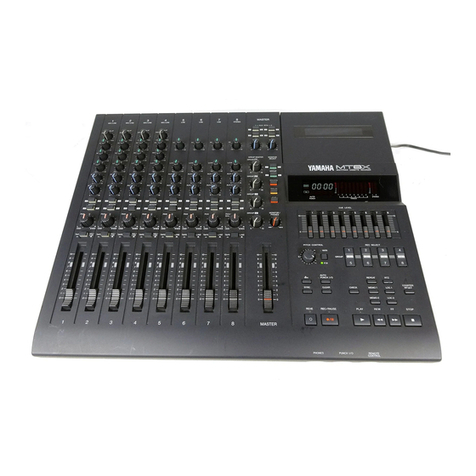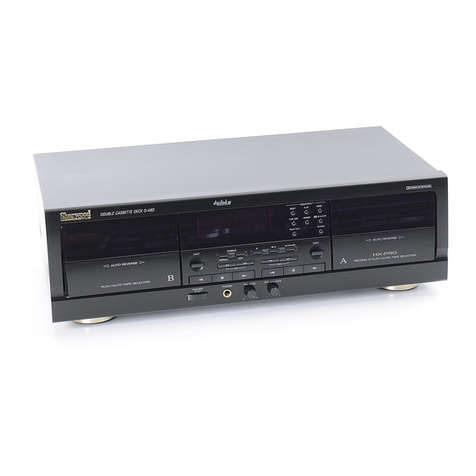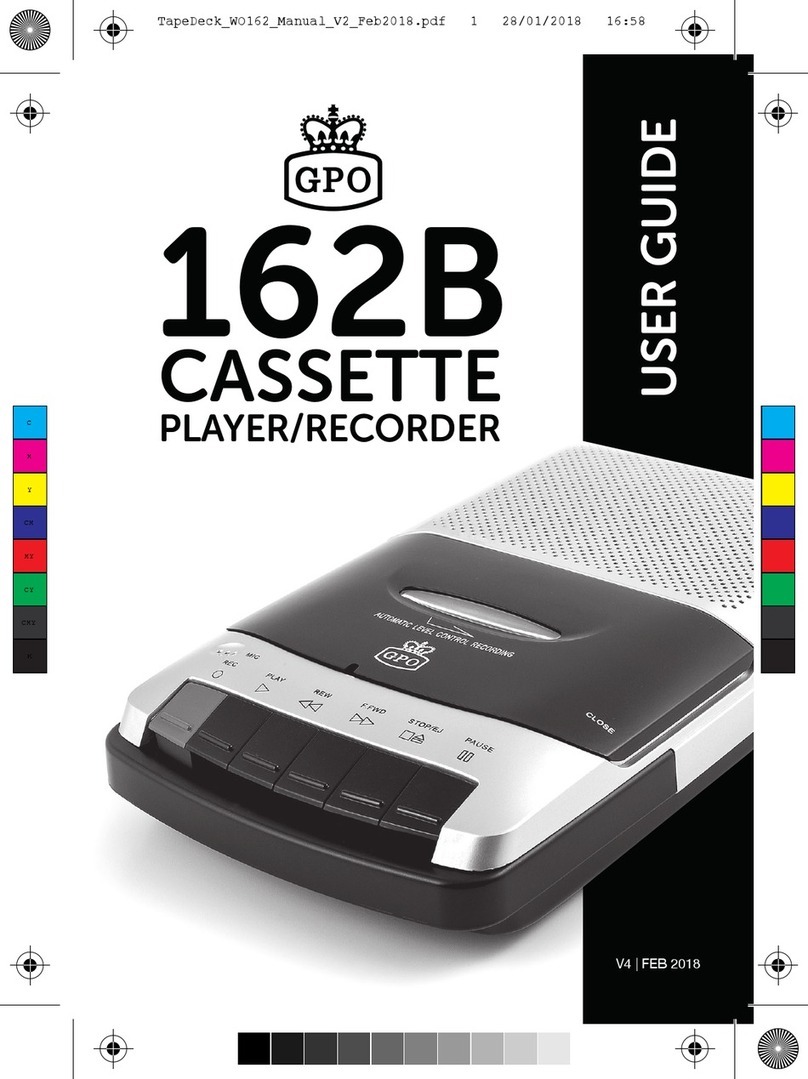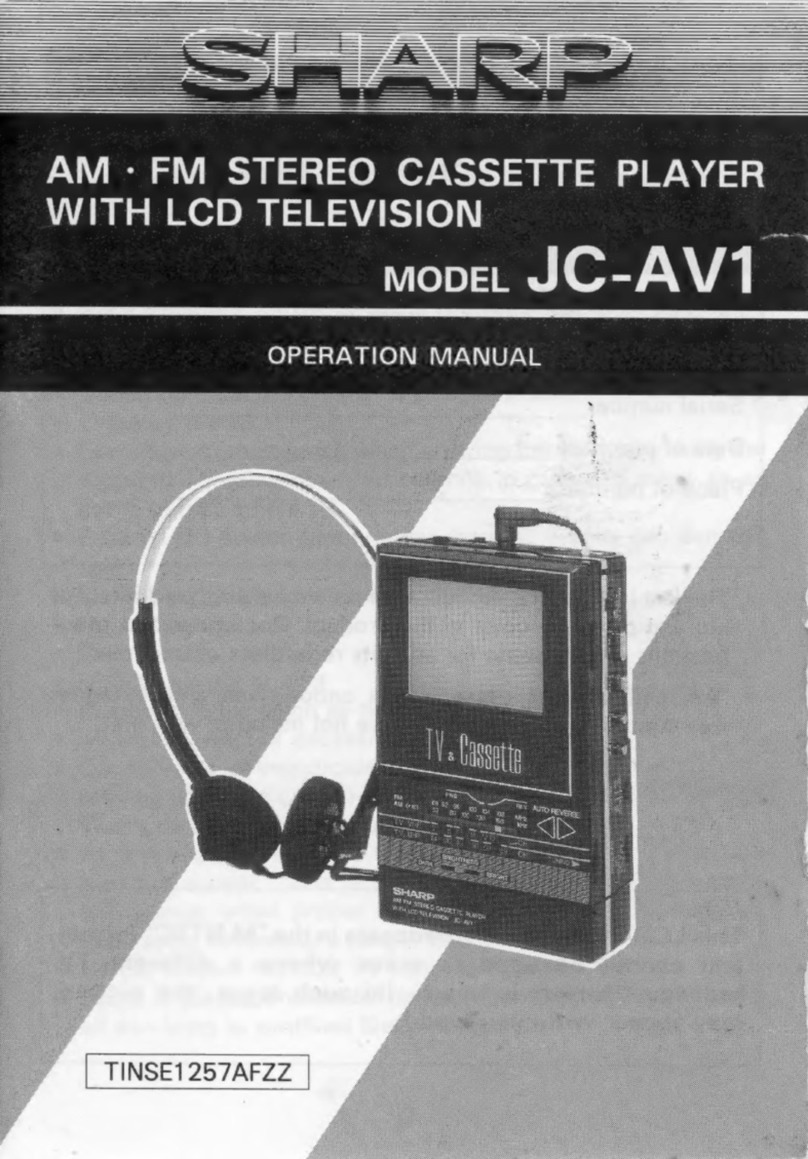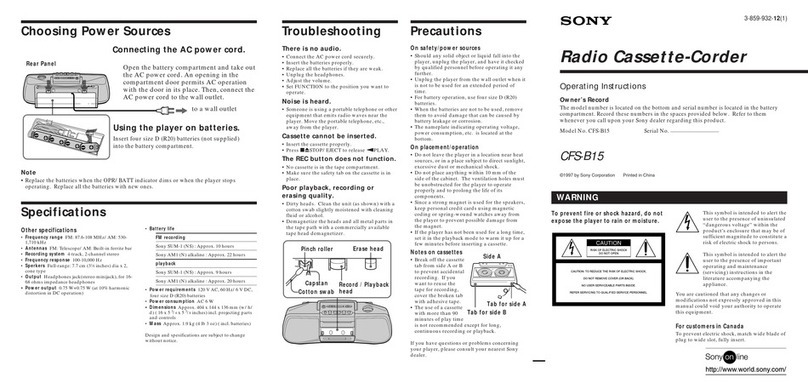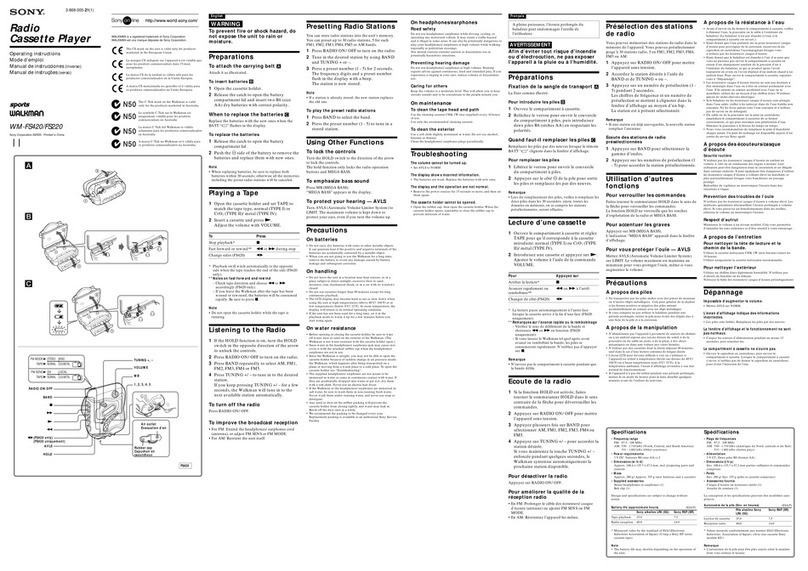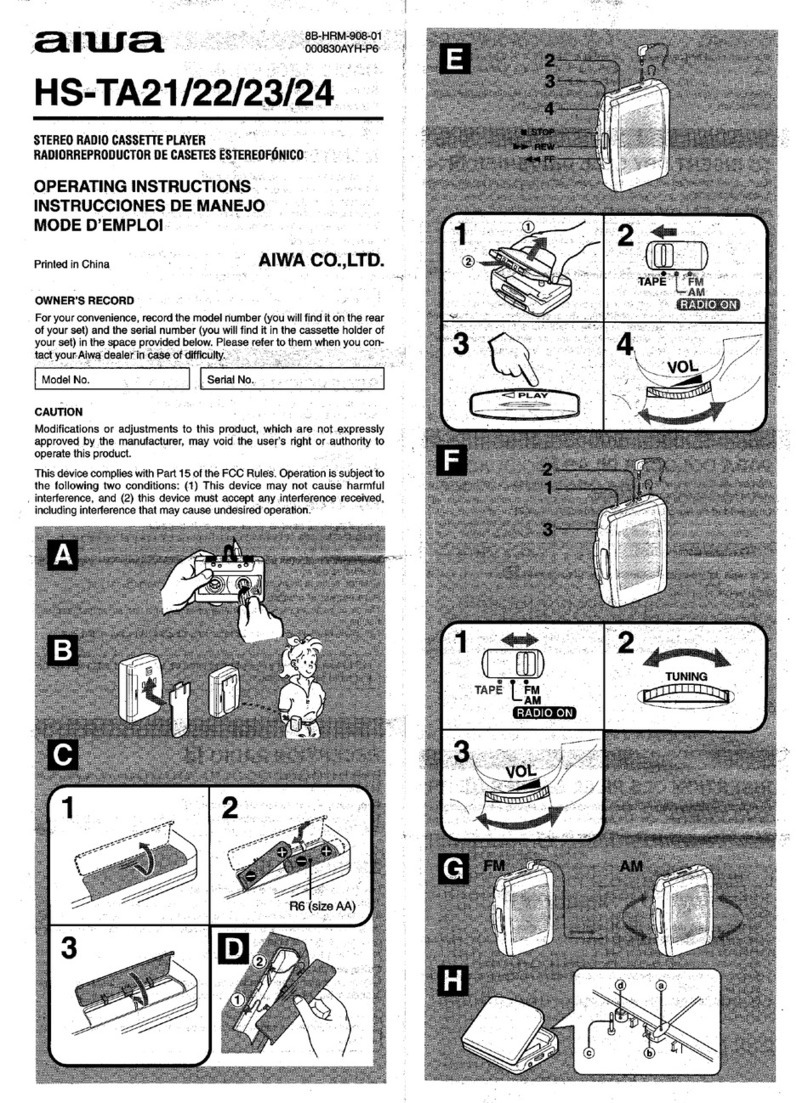
PANEL
FACILITIES
|
REAR
PANEL
FACILITIES
[
Cassette
deck
receiver:
RX-Z15/RX-Z35/RX-Z45.
|
@)
FM/AM
ANTENNA
terminals
Antennas
must
be
connected
to
these
terminals:
otherwise
you
will
not
be
able
to
receive
stations.
See
page
6
for
details
on
ANTENNA
CONNECTIONS.
@)
Ground
terminal
(GND)
Connect
this
to
the
ground
terminal
on
the
turntable
(except
for
PL-Z85).
@
PHONO
input
jacks
Connect
the
audio
cord
of
the
turntable
to
these
jacks.
@CD
input
jacks
Connect
to
output
jacks
of
a
CD
player.
@®
TURNTABLE
(DC
12
V
OUTPUT)
jack
This
jack
supplies
power
to
the
turntable
PL-Z85.
..Connect.the.power.supply.cord.of.the.
turntable.
to
this
jack.
For
U.S.
model:
In
the
U.S.A.,
model
PL-285
is
not
said,
so
do
not
use
this
jack.
If
you
are
using
a
turntable,
be
sure
that
it
is
a
PHONEER
madel.
©
CONTROL
OUT
jack
Connect
to
a
compact
disc
player
PD-Z65,
PD-Z75T,
PD-Z74T
or
PD-Z85M
CONTROL
jack.
|
For
U.S.
model:
|
In
the
U.S.A.,
only
the
PD-Z85M
can
be
connected.
*
illustration
shows
multi-voltage
model.
@
SPEAKERS
jacks
Connect
exclusive
S-Z235D
speakers
to
these
jacks.
L:
Connect
the
left
speaker
system
as
seen
from
the
listening
position.
R:
Connect
the
right
speaker
system
as
seen
from
the
listening
position.
@®SURROUND
SPEAKERS
jacks
Connect
the
surround
speaker
systems.
NOTE:
Connect
a
speaker
system
having
a
nominal
impedance
of
16
2
or
more.
@AC
OUTLET
(SWITCHED
50
W
MAX)
Power
supplied
through
this
outlet
is
turned
on
and
off
by
the
cassette
deck
receiver's
POWER
switch.
Total
electrical
power
consumption
of
connected
equipment
should
not
exceed
50
W.
{U.S.
and
Canadian
models]
AC
OUTLET
(SWITCHED
50
W
{0.4
A)
MAX)
Power
supplied
through
this
outlet
is
turned
on
and
off
by
the
cassette
deck
receiver’s
POWER
switch.
Total
electrical
power
consumption
of
connected
equipment
should
not
exceed
50
W
(0.4
A).
NOTE:
Do-not.connect-appliances..with
high.
power.
consumption..SUuch.as.
heaters,
irons,
or
television
sets
to
the
AC
OUTLET
in
order
to
avoid
overheating
or
fire
hazard.
This
can
cause
the
cassette
deck
receiver
to
malfunction.
Power
cord
Connect
this
to
the
household
electrical
outlet.
9
<ARB1350>
En

